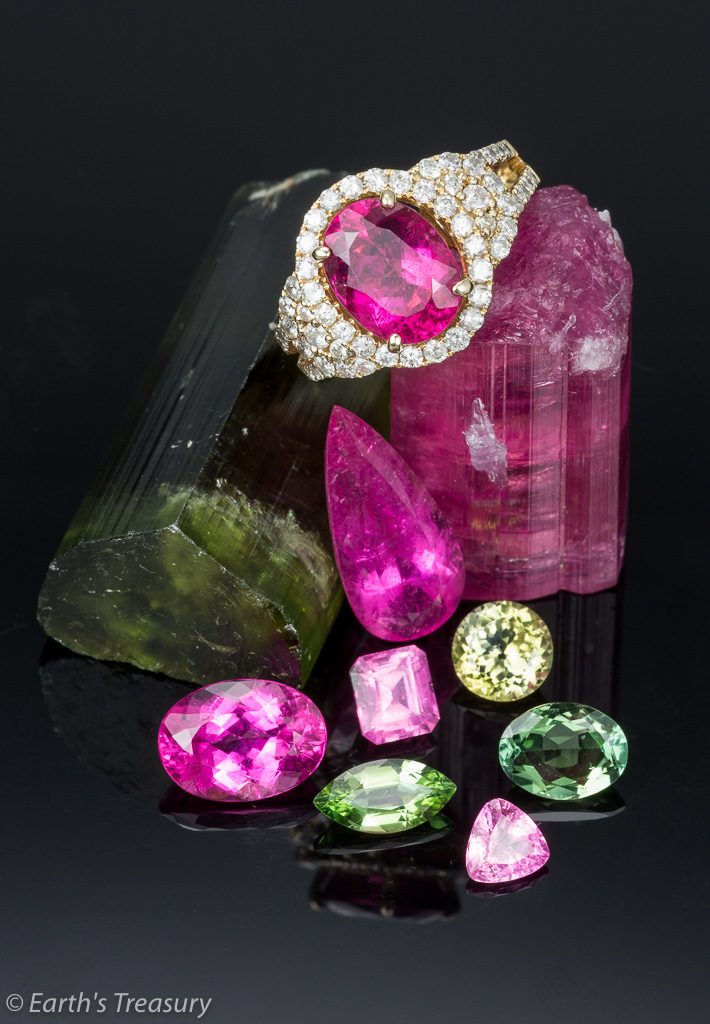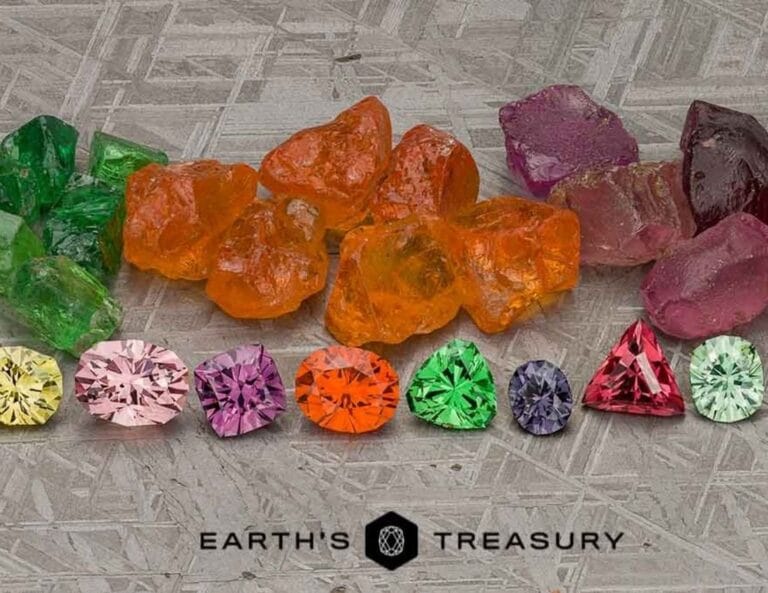Tourmaline

Overview
Tourmaline is a remarkable gemstone, coming in an incredible variety of colors. Tourmaline can also be found in multi-colored forms, which is relatively uncommon in gemstones. It is actually a family of minerals that share a similar chemical structure. Most gem tourmalines are of the elbaite type, although certain dravite and liddicoatite tourmalines are also used as gems. It has been used as a gemstone for many hundreds if not thousands of years, but only in the past three centuries or so has it become a prominent gem variety highly sought after for use in jewelry. With a Mohs hardness of 7.0-7.5, its a relatively durable gemstone and suitable for use in a variety of jewelry.
Tourmaline is highly pleochroic, often showing two completely different colors on the different optical axes of the crystal. While this can create a beautiful visual effect in many gemstones, some color combinations do not blend well, and careful orientation of the rough when cutting is crucial to getting the best color in a finished gemstone.
Named Species/Varieties
There a number of named varieties of tourmaline: Rubellite for red to reddish-purple tourmalines, Indicolite for blue to blue-green tourmaline and verdelite for green tourmaline. Watermelon tourmaline is red to reddish-purple with a green rind, similar to the watermelon fruit. Tourmaline colored by trace amounts of copper was first discovered in Paraíba State, Brazil and the term “Paraíba-type” is now used for all copper-bearing tourmaline. Tourmaline in almost every color can be found as chatoyant “cats-eye” gemstones.
Where is it found
Tourmaline is found in wide variety of locales around the world. Major economic deposits are found in the United States (historically in Maine and California), Brazil, Nigeria, Mozambique, Madagascar and Kenya to name a few.
Treatments
Tourmaline is subjected to a variety of treatments to improve the color or stability of the material. It is often heated to lighten up darker colors, or change the color. For example, purple copper-bearing tourmalines can be heated to a bright blue-green hue that is very desirable. It can also be irradiated to change the color. Pale pinks can be turned a deep rich magenta or red with irradiation and then heating to anneal the color. Finally, some tourmaline is treated with polymers or oils to improve the clarity, as some varieties of tourmaline are prone to cracks fissure-like inclusions.
Use in jewelry
The brilliance, wide range of colors and hardness of tourmaline make it a great choice for use in jewelry.
Buy tourmaline
You can look at my current inventory of loose grossular garnets here: https://www.earthstreasury.com/product-category/gemstones/tourmaline-gemstones/


